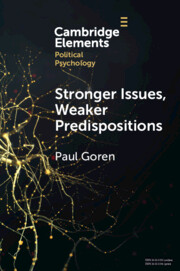Refine search
Actions for selected content:
171 results
3 - The Nature–Nurture Debate across Disciplines
- from Part I - Introduction
-
- Book:
- Genes, Brains, Evolution and Language
- Published online:
- 13 November 2025
- Print publication:
- 13 November 2025, pp 77-98
-
- Chapter
- Export citation

Ancient Assyrians
- Identity and Society in Antiquity and Beyond
-
- Published online:
- 09 October 2025
- Print publication:
- 23 October 2025
Max Adler’s Neo-Kantian Reinvention of Marx’s Notion of History
-
- Journal:
- Kantian Review , First View
- Published online by Cambridge University Press:
- 09 October 2025, pp. 1-19
-
- Article
-
- You have access
- Open access
- HTML
- Export citation
2 - Class Matters: The Sociology of the Profession
-
- Book:
- Palestinian Doctors
- Published online:
- 12 September 2025
- Print publication:
- 02 October 2025, pp 36-70
-
- Chapter
- Export citation
Introduction
-
-
- Book:
- Anticolonialism and Social Thought
- Published online:
- 16 September 2025
- Print publication:
- 25 September 2025, pp 1-22
-
- Chapter
-
- You have access
- HTML
- Export citation
What is Cli-Fi?
-
- Journal:
- Australian Journal of Environmental Education / Volume 41 / Issue 3 / July 2025
- Published online by Cambridge University Press:
- 08 September 2025, pp. 409-419
-
- Article
-
- You have access
- Open access
- HTML
- Export citation
Politics and algorithmic articulation of law: tracing the discrepancies and backstage decision-making in the development of the profiling algorithm in Polish labour market policies
-
- Journal:
- International Journal of Law in Context , First View
- Published online by Cambridge University Press:
- 29 August 2025, pp. 1-20
-
- Article
-
- You have access
- Open access
- HTML
- Export citation
Teaching an Introduction to Public Humanities: A Pedagogical Experiment
- Part of
-
- Journal:
- Public Humanities / Volume 1 / 2025
- Published online by Cambridge University Press:
- 11 August 2025, e119
-
- Article
-
- You have access
- Open access
- HTML
- Export citation
Chapter 7 - Multidisciplinarity in Psychiatry
- from Part II - The Present and the Future
-
-
- Book:
- Values in Psychiatry
- Published online:
- 24 June 2025
- Print publication:
- 10 July 2025, pp 106-123
-
- Chapter
- Export citation
The overview effect and patient care in psychiatry
-
- Journal:
- The British Journal of Psychiatry , FirstView
- Published online by Cambridge University Press:
- 30 June 2025, pp. 1-3
-
- Article
-
- You have access
- HTML
- Export citation
Digital accents, homogeneity-by-design, and the evolving social science of written language
-
- Journal:
- Annual Review of Applied Linguistics / Volume 45 / March 2025
- Published online by Cambridge University Press:
- 13 June 2025, pp. 50-68
-
- Article
-
- You have access
- Open access
- HTML
- Export citation
13 - The Holocaust and Social Thought
- from Part III - Culture and Ideas
-
-
- Book:
- The Cambridge History of the Holocaust
- Published online:
- 16 May 2025
- Print publication:
- 12 June 2025, pp 309-331
-
- Chapter
- Export citation
From technical to academic central banking: The scientization of the Banque de France
-
- Journal:
- Finance and Society / Volume 11 / Issue 2 / August 2025
- Published online by Cambridge University Press:
- 16 April 2025, pp. 253-277
-
- Article
-
- You have access
- Open access
- HTML
- Export citation
Blurred spaces and erosions of privacy: Examining working from home during the Covid-19 pandemic in Norway through the lens of the legal notion of privacy
-
- Journal:
- International Journal of Law in Context / Volume 21 / Issue 3 / September 2025
- Published online by Cambridge University Press:
- 20 March 2025, pp. 412-430
-
- Article
-
- You have access
- Open access
- HTML
- Export citation

Japan's New Industrial Policy
-
- Published online:
- 07 March 2025
- Print publication:
- 03 April 2025
-
- Element
- Export citation
1 - Hard Binaries and Their Discontents
- from Part I - Theory
-
- Book:
- Contesting Pluralism(s)
- Published online:
- 19 December 2024
- Print publication:
- 02 January 2025, pp 5-29
-
- Chapter
- Export citation
Reflection on legal transplantation theories: a socio-legal historical study of the formulation and evolution of Chinese marine insurance law
-
- Journal:
- International Journal of Law in Context / Volume 21 / Issue 1 / March 2025
- Published online by Cambridge University Press:
- 10 December 2024, pp. 80-98
-
- Article
-
- You have access
- Open access
- HTML
- Export citation

Stronger Issues, Weaker Predispositions
- Abortion, Gay Rights, and Authoritarianism
-
- Published online:
- 09 December 2024
- Print publication:
- 16 January 2025
-
- Element
- Export citation
Social networks and the impact of the European Court of Human Rights
-
- Journal:
- European Law Open / Volume 3 / Issue 2 / June 2024
- Published online by Cambridge University Press:
- 09 December 2024, pp. 418-430
-
- Article
-
- You have access
- Open access
- HTML
- Export citation
19 - Ethnomethodology, Conversation Analysis, and the Study of Interaction in Everyday Life
- from Part V - Avenues into Action
-
-
- Book:
- The Cambridge Handbook of Methods in Conversation Analysis
- Published online:
- 06 December 2024
- Print publication:
- 05 December 2024, pp 512-540
-
- Chapter
- Export citation
